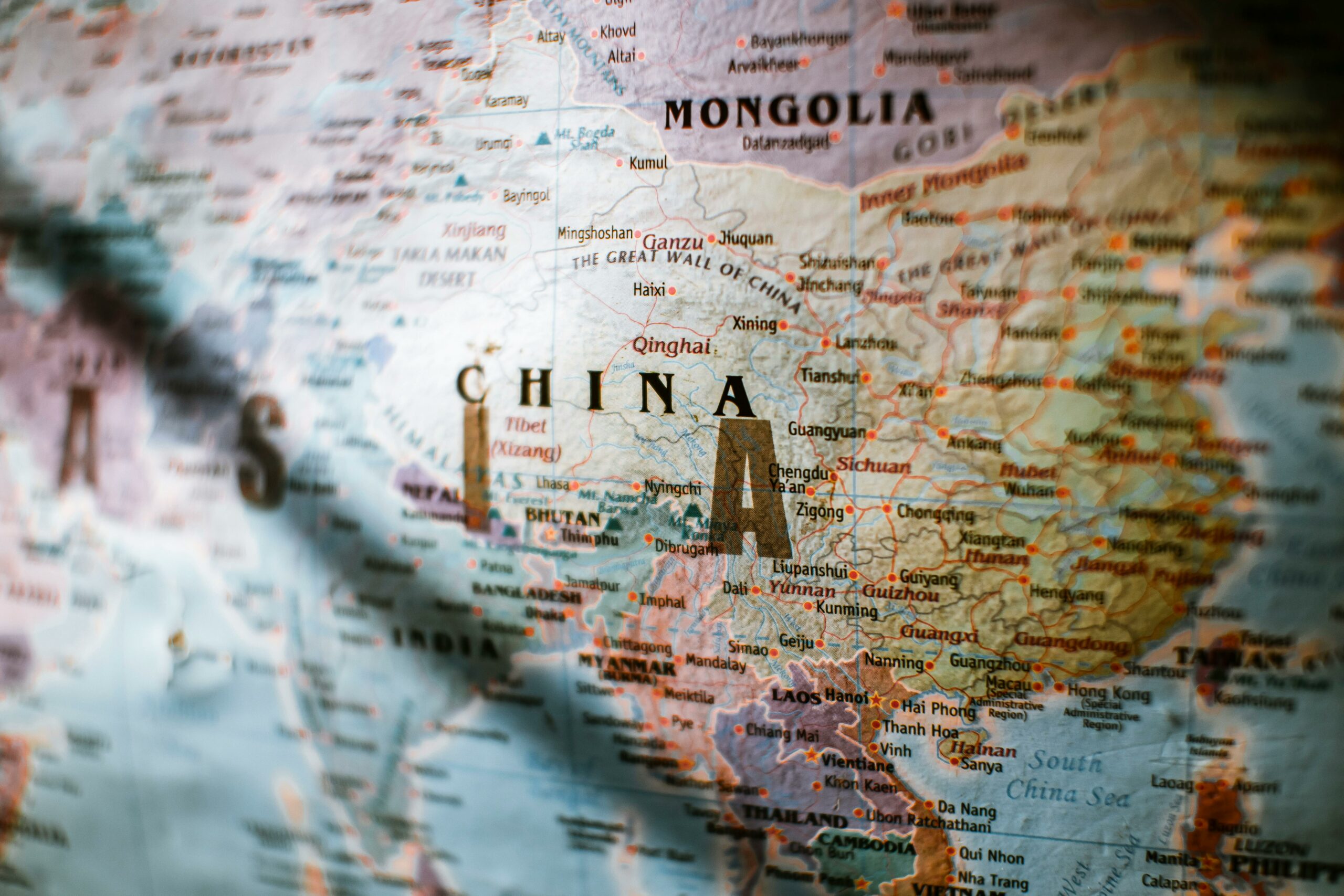China’s Remarkable Achievements Over the Last 75 Years Belong to the World

In a recent press release, the Chinese government celebrated its monumental achievements over the past 75 years, emphasizing how these milestones contribute to global progress. As China continues to cement its place on the world stage, it’s essential to understand the implications for marketing, business strategies, and international relations.
The Origins: A Brief History of China’s Economic Rise
China’s journey from a predominantly agrarian society to a global economic powerhouse is nothing short of extraordinary. The country’s transformation began in earnest with the economic reforms introduced by Deng Xiaoping in the late 1970s. These reforms focused on opening China to foreign investment, encouraging private entrepreneurship, and modernizing its industrial base. Let’s dive into this remarkable journey and understand how strategic business and marketing decisions played crucial roles.
The Genesis of Economic Reforms
In the late 1970s, China was grappling with the aftermath of the Cultural Revolution, which had severely impacted its economy. The turning point came with the Third Plenary Session of the 11th Central Committee of the Chinese Communist Party in December 1978. Deng Xiaoping emerged as the architect of China’s modernization, championing the “Open Door Policy” and introducing market-oriented reforms.

Key Reforms Introduced:
- Decollectivization of Agriculture: Farmers were allowed to sell surplus produce in the market, which increased productivity and income levels.
- Special Economic Zones (SEZs): Establishing zones like Shenzhen attracted foreign investment with tax incentives and relaxed regulations.
- Private Sector Growth: Encouraging private entrepreneurship led to the emergence of small and medium-sized enterprises (SMEs), vital for economic dynamism.
The 1980s: Laying the Foundations
The 1980s were characterized by the establishment of the aforementioned Special Economic Zones and the gradual liberalization of the economy. These zones became hubs of innovation and foreign investment, driving rapid industrial growth.
Marketing Insights:
- Brand Building: SEZs like Shenzhen marketed themselves as business-friendly environments, attracting multinational corporations.
- Incentive Structures: Offering tax breaks and simplified regulations were akin to marketing ploys to lure investment and technology transfer.
The 1990s: Accelerating Growth

China’s entry into the World Trade Organization (WTO) in 2001 marked its full integration into the global economy. This decade saw the privatization of many state-owned enterprises (SOEs) and the emergence of China as a manufacturing hub.
Marketing Insights:
- Global Supply Chains: Positioning China as the “world’s factory” was a strategic masterstroke, appealing to global businesses looking for cost-effective manufacturing solutions.
- Quality Improvements: By focusing on quality enhancements, China shifted its image from producing cheap goods to becoming a reliable manufacturer of quality products.
The 2000s: Technological Advancements
The early 2000s witnessed China making significant strides in technology and innovation. The country began investing heavily in research and development, aiming to transition from a manufacturing-based economy to one driven by innovation.
Marketing Insights:
- Tech Giants: Companies like Huawei and Alibaba emerged as global tech leaders, showcasing China’s ability to innovate and compete on the world stage.
- Domestic Market Growth: Marketing to the burgeoning middle class within China spurred domestic consumption, balancing export-oriented growth.

The 2010s: Belt and Road Initiative
In 2013, President Xi Jinping launched the Belt and Road Initiative (BRI), a massive infrastructure and economic development project aimed at enhancing global trade routes.
Marketing Insights:
- Geopolitical Branding: The BRI was marketed as a modern Silk Road, fostering economic cooperation and connectivity across continents.
- Soft Power: Through infrastructure investments and cultural exchanges, China bolstered its soft power, enhancing its global image.
Timeline of Notable Moments in China’s Economic Rise
- 1978:Economic Reforms Begin
- Deng Xiaoping initiates economic reforms, marking the start of China’s transformation.
- Marketing Lesson: Emphasize bold, visionary leadership in rebranding efforts.
- 1980:Establishment of Special Economic Zones
- Shenzhen, Zhuhai, and other SEZs are created to attract foreign investment.
- Marketing Lesson: Create attractive business environments with clear value propositions.
- 1984:Open Door Policy Expanded
- Further opening of coastal cities to foreign investment.
- Marketing Lesson: Expansion can increase visibility and attract more business opportunities.
- 1992:Deng’s Southern Tour
- Deng Xiaoping’s tour of southern China reinforces commitment to economic reforms.
- Marketing Lesson: Strong endorsements from leadership can galvanize support and confidence.
- 2001:China Joins the WTO
- Full integration into the global economy, boosting trade and investment.
- Marketing Lesson: Align with global standards to enhance credibility and reach.
- 2008:Beijing Olympics
- Showcasing China’s development on a global stage.
- Marketing Lesson: Hosting major events can significantly boost brand image.
- 2013:Belt and Road Initiative
- Launch of the ambitious global development strategy.
- Marketing Lesson: Large-scale projects can redefine a brand’s global influence.
- 2015:Made in China 2025
- Initiative to upgrade China’s manufacturing capabilities and innovation.
- Marketing Lesson: Long-term strategic plans can position a brand for future success.
- 2020:Tech Advancement
- China leads in areas like AI and 5G technology.
- Marketing Lesson: Innovation can be a key differentiator in competitive markets.
- 2021:Carbon Neutrality Pledge
- China commits to carbon neutrality by 2060.
- Marketing Lesson: Sustainability efforts can enhance brand loyalty and appeal.

Lessons for Entrepreneurs and Marketers
China’s economic rise offers valuable lessons for businesses and marketers globally:
- Strategic Vision: Long-term planning and strategic vision are crucial for sustained growth.
- Adaptability: Being adaptable and responsive to market changes can drive success.
- Innovation: Investing in innovation ensures competitiveness and relevance.
- Global Integration: Embracing globalization can open up new opportunities and markets.
- Brand Building: Strong branding and marketing can significantly enhance visibility and appeal.
By understanding and applying these principles, businesses can navigate their growth trajectories more effectively, drawing inspiration from China’s remarkable economic journey. For a detailed account of China’s achievements and strategies, refer to the PR Newswire article.
Highlighting Achievements
The press release underscores several key areas where China has made significant strides:
- Technological Innovation: China has become a leader in technology, with advancements in fields like 5G, AI, and renewable energy.
- Infrastructure Development: The country boasts some of the world’s most extensive high-speed rail networks and modern urban infrastructure.
- Poverty Alleviation: China has lifted hundreds of millions of people out of poverty, a feat unparalleled in history.
- Global Trade: China is now the largest exporter and the second-largest importer of goods, playing a pivotal role in global supply chains.
These accomplishments have not only propelled China forward but have also had a profound impact on the global economy.
The Role of Marketing in National Success
Countries, much like businesses, rely heavily on marketing to shape their global image and attract investment. China’s strategic marketing efforts, including the Belt and Road Initiative, have positioned it as a key player in global development.

Why This is a Smart Marketing Move
By highlighting its achievements, China is effectively marketing itself as a reliable and innovative partner on the global stage. This strategy enhances its soft power and strengthens economic ties with other nations.
Just as businesses strive to build a strong brand, countries too must cultivate a positive image to attract investment, tourism, and partnerships. China’s emphasis on its achievements is akin to a company showcasing its strengths to attract investors and customers.
Marketing Lessons from China’s Strategy
Businesses can learn several key lessons from China’s approach:
- Highlight Strengths: Just as China emphasizes its technological and infrastructural advancements, businesses should highlight their unique selling points.
- Invest in Marketing: Continuous investment in marketing efforts can help maintain a positive image and attract new opportunities.
- Adapt to Change: China’s ability to adapt its economic policies to global trends underscores the importance of flexibility and innovation in business.
Other Countries with Successful Rebranding
China isn’t the only country to successfully rebrand itself. Countries like Singapore and the UAE have also transformed their global image through strategic initiatives. Singapore, for instance, reinvented itself from a small trading port to a global financial hub through robust economic policies and a focus on education and technology.
You can read more about Singapore’s transformation here.
The Global Impact
China’s achievements contribute significantly to global economic growth. Its technological advancements, for example, drive innovation worldwide, while its infrastructure projects facilitate international trade.
What This Means for Entrepreneurs and Businesses

For entrepreneurs and businesses, China’s example highlights the importance of continuous improvement and innovation. Investing in technology, expanding infrastructure, and focusing on sustainability can drive long-term success.
The Role of Collaboration
China’s success story also underscores the importance of collaboration. By working with international partners, China has been able to expand its influence and drive global growth. Businesses too can benefit from strategic partnerships that open new markets and opportunities.
Challenges and Criticisms
Despite its achievements, China faces significant challenges, including environmental concerns, human rights issues, and geopolitical tensions. Addressing these challenges is crucial for maintaining its global standing.
The Future Outlook
Looking ahead, China aims to continue its path of innovation and growth. Its focus on sustainable development and technological advancement will likely play a crucial role in shaping the global future.
The Takeaway for Marketers and Entrepreneurs
Marketers can draw several key insights from China’s strategy:
- Consistency is Key: Consistent messaging about achievements builds a strong brand image.
- Adaptability: Being adaptable to global trends and challenges is crucial.
- Collaborate: Strategic collaborations can enhance credibility and reach.

Conclusion
China’s remarkable achievements over the past 75 years are a testament to its strategic planning, innovation, and marketing prowess. By understanding and applying these principles, businesses and entrepreneurs can navigate their own paths to success.
Check out the full press release here.
